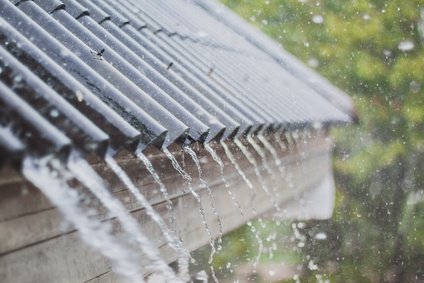This article originally appeared on La Jolla Light.
In San Diego, we normally don’t have to worry about winter weather. Our pipes aren’t going to freeze, and we aren’t going to spend our mornings shoveling driveways. But with weather forecasters all over Southern California predicting an El Niño winter, and a big one at that, it’s important that we properly prepare for the coming rainy months and all the possible problems that they can cause homeowners. While you still might not get any sympathy from those living in Buffalo, these seven tips could help you and your house stay dry while at the same time save you money in the long run.
1. Prepare for mudslides. This is a real concern for many homeowners in San Diego County, especially those living in La Jolla. But there are precautions you can take to help prevent the worst from happening.
- Be informed. Mudslides usually occur in places where they have happened in the past. Know your land and your area’s history to assess the potential risks. Also be up to date on your insurance policy and what is and is not covered.
- Educating yourself about your property will help you understand if you need to build retaining walls or deflection walls, to direct debris flow around your structure.
- It’s a good idea to install flexible pipe fittings to avoid gas and water leaks.
- You may want to stock up on sandbags and other similar barrier material.
- Lastly, be sure to have am emergency kit, evacuation plan, and phone numbers to local fire and police stations. Getting help immediately, could save your house from damage.
2. Repair and clean rain gutters. While mudslides may be the biggest potential catastrophe, damage to your roof and walls can still be very costly. Clean out dirty and clogged rain gutters and downspouts. And when repairing gutters, use extra-long lag screws as they tend to be stronger and will hold better.
3. Fix cracks in concrete. While concrete does have a tendency to crack, it can get much worse during winter. If water gets into the cracks and softens the ground underneath, the cracks will worsen and multiply. For cracks up to a quarter inch, you can use concrete caulk. For larger cracks, use concrete patch. It’s better to repair cracks now instead of repairing whole patios and driveways later.
4. Paint over water damage and rusty fixtures. The problem with painting over water stains is that they won’t go away unless you use a primer-sealer first. And although messier, the oil-based sealers will work more effectively than water-based. When it comes to rusted outdoor fixtures, there are now paint additives that will help the paint stick to rust and help stop corrosion from continuing. If left untreated, rusty features will eventually lock up. To prevent this, keep fixtures like gate latches, hinges, etc. well lubricated. In this case, heavy grease will work better than light oil or silicon from spray cans as they often evaporate.
5. Energy tune up. Along with preventing and managing water damage, there are also ways in which you can save money this winter when it comes to heating your home. First, it’s a smart idea to get a professional energy audit. It is worth it in the long run to have a qualified contractor come to your house for an in-depth energy assessment. Along these same lines, it is a good idea to have your heating system checked out and tuned up, and you might also want to install a new programmable thermostat. While all of these items require an upfront cost, you will be saving money in the long run by having your house’s energy and heating running efficiently.

